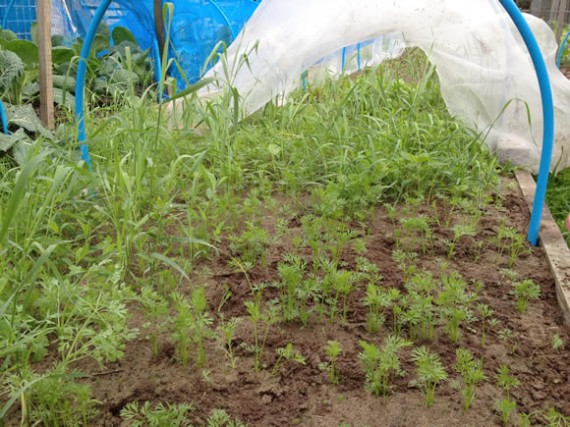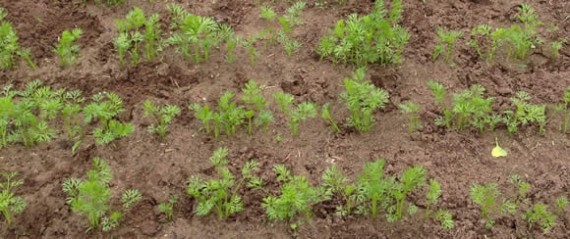Sowing and caring for carrots
Soil for carrots
Carrots perform best in soil that is deep, fertile and well-drained, ideally sandy.
If your soil is shallow, stony and / or heavy, go for short-rooted varieties. For the best quality crop invest the time in removing stones from the carrot seed bed.
Don’t grow carrots in soil that has been recently manured – it’s reputed to cause forking.
Prepare your carrot seed bed a couple of weeks before sowing and add a general purpose fertilizer into the surface.
Growing carrots in containers
Short-rooted varieties can be successfully grown in containers or growbags - just make sure they never dry out completely. Although carrots will withstand drought, it will reduce the quality of the crop.
Sowing carrot seed
Carrot seeds are very small and very light. Since it’s important to sow them thinly, mixing them with sand can help achieve this.
Pelleted seeds are available as are carrot seed tapes, which make the whole job easier.
Early varieties can be sown from February under some sort of protection - fleece works well - and the maincrop sowing season starts in April. Sow maincrop right through to July and you can be harvesting right through to November.
Seeds should be sown in rows 6” apart and ½” deep. If using pelleted seed, sow them 1” apart. Germination takes about 17 days.
Carrot crop care
Thin out seedlings to 3” apart once they are large enough to handle. Now this is when the dreaded carrot fly can strike – it smells the bruised foliage and is attracted to the young plants.
 Thinning and weeding our carrot bed. We use fleece as protection from carrot fly.
Thinning and weeding our carrot bed. We use fleece as protection from carrot fly.
Watering if the soil is dry, thinning in the evening and planting carrots beside strong smelling crops such as onions and coriander can help to protect carrots.
Carrot fly resistant varieties are available too – Flyaway and Resistafly (clue’s in the names!). Or you can erect physical barriers made from netting – they don’t have to be high, as the fly only gets about 12” off the ground.
Once you’ve finished thinning, firm the soil gently around the remaining plants and burn the thinnings – or feed them to your ponies or pigs.
Keep the young seedlings weeded – best done by hand unless you are very careful with the hoe. Once the foliage is developed, this will choke out most annual weeds but things like docks will need to be removed by hand.
 Freshly-weeded carrot seedlings.
Freshly-weeded carrot seedlings.
If the weather is very dry, water the carrots to prevent root splitting, which can occur when there’s heavy precipitation on very dry soil.
- Previous « Growing Carrots
- Next Harvesting and storing carrots »

About Rosemary Champion
Rosemary lives on a 12 acre smallholding in Angus, in the east of Scotland, where she keeps Ryeland Sheep, Shetland cattle and assorted poultry. She was destined to be a smallholder from an early age.
Further Reading
 Vegetable Growing Month-by-month John Harrison |  Kitchen Garden Estate: Self-sufficiency Inspired by Country Estates of the Past Helene Gammack |  Fruit and Vegetables for Scotland: A Practical Guide and History Kenneth Cox and Caroline Beaton |  The Vegetable and Herb Expert Dr D G Hessayon |  Comfrey: Past, Present and Future Lawrence D. Hills |

















